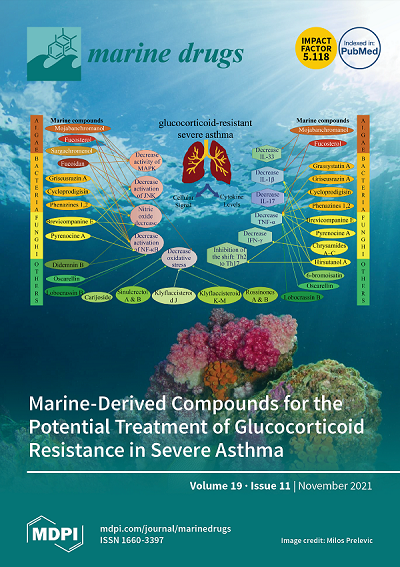Exploring the Diversity and Specificity of Secondary Biosynthetic Potential in Rhodococcus
IF 4.9
2区 医学
Q1 CHEMISTRY, MEDICINAL
引用次数: 0
Abstract
The actinomycete genus Rhodococcus is known for its diverse biosynthetic enzymes, with potential in pollutant degradation, chemical biocatalysis, and natural product exploration. Comparative genomics have analyzed the distribution patterns of non-ribosomal peptide synthetases (NRPSs) in Rhodococcus. The diversity and specificity of its secondary metabolism offer valuable insights for exploring natural products, yet remain understudied. In the present study, we analyzed the distribution patterns of biosynthetic gene clusters (BGCs) in the most comprehensive Rhodococcus genome data to date. The results show that 86.5% of the gene cluster families (GCFs) are only distributed in a specific phylogenomic-clade of Rhodococcus, with the most predominant types of gene clusters being NRPS and ribosomally synthesized and post-translationally modified peptides (RiPPs). In-depth mining of RiPP gene clusters revealed that Rhodococcus encodes many clade-specific novel RiPPs, with thirteen core peptides showing antibacterial potential. High-throughput elicitor screening (HiTES) and non-targeted metabolomics revealed that a marine-derived Rhodococcus strain produces a large number of new aurachin-like compounds when exposed to specific elicitors. The present study highlights the diversity and specificity of secondary biosynthetic potential in Rhodococcus, and provides valuable information for the targeted exploration of novel natural products from Rhodococcus, especially for phylogenomic-clade-specific metabolites.探索 Rhodococcus 次生生物合成潜能的多样性和特异性
放线菌属 Rhodococcus 因其多种多样的生物合成酶而闻名,在污染物降解、化学生物催化和天然产物开发方面具有潜力。比较基因组学分析了 Rhodococcus 中非核糖体肽合成酶(NRPSs)的分布模式。它的次级代谢的多样性和特异性为天然产物的探索提供了宝贵的见解,但对它的研究仍然不足。在本研究中,我们分析了迄今为止最全面的 Rhodococcus 基因组数据中生物合成基因簇(BGCs)的分布模式。结果表明,86.5%的基因簇家族(GCFs)只分布在罗氏球菌的一个特定系统发育支系中,其中最主要的基因簇类型是NRPS和核糖体合成及翻译后修饰肽(RiPPs)。对 RiPP 基因簇的深入挖掘发现,Rhodococcus 编码许多支系特异的新型 RiPPs,其中 13 种核心肽具有抗菌潜力。高通量诱导剂筛选(HiTES)和非靶向代谢组学发现,当暴露于特定的诱导剂时,海洋来源的罗氏球菌菌株会产生大量新的类樱草素化合物。本研究强调了 Rhodococcus 次生生物合成潜能的多样性和特异性,为有针对性地探索 Rhodococcus 新型天然产物,尤其是系统发生学支系特异性代谢物提供了宝贵信息。
本文章由计算机程序翻译,如有差异,请以英文原文为准。
求助全文
约1分钟内获得全文
求助全文
来源期刊

Marine Drugs
医学-医药化学
CiteScore
9.60
自引率
14.80%
发文量
671
审稿时长
1 months
期刊介绍:
Marine Drugs (ISSN 1660-3397) publishes reviews, regular research papers and short notes on the research, development and production of drugs from the sea. Our aim is to encourage scientists to publish their experimental and theoretical research in as much detail as possible, particularly synthetic procedures and characterization information for bioactive compounds. There is no restriction on the length of the experimental section.
 求助内容:
求助内容: 应助结果提醒方式:
应助结果提醒方式:


